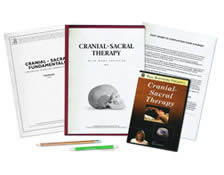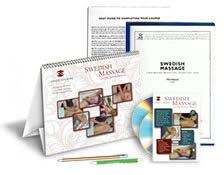Every client is different. Some enter your healing space totally aware of their physical and emotional health barometer, while others only know that they feel good after a massage. Communicating with your clients in order to cover such crucial aspects as comfortable pressure limits, body temperature, health history, description of physical sensations and the uncovering of emotions hidden in muscle tissue is integral to an effective session. Asking for and receiving feedback from your client enables the therapist to tailor their treatment to specific needs and wants. A challenge arises when the client does not offer feedback, or worse, is unaware of their current physical and/or emotional experience. This is when intuition can help guide a therapist through a successful session.
Bestselling author, Shakti Gawain defines intuition; “There is a universal, intelligent life force that exists within everyone and everything. It resides within each one of us as a deep wisdom, an inner knowing.” Gawain does not suggest that we operate solely on the intuitive mind, but to balance it with the intellect. She describes the intuitive mind as having access to an infinite amount of information, where we can tap into a deep storehouse of knowledge and wisdom that exceeds our own experiences.
Author and psychiatrist Dr. Judith Orloff asserts that we are keepers of an innate intuitive intelligence so perceptive that it can tell us how to heal—and prevent—illness. Yet intuition and spirituality are the aspects of our wisdom that are typically disenfranchised from, and ignored by, traditional health care.
The ability to simultaneously combine input from our intuition and intellect is the premier mark of a gifted healer. Having the analytical skills and facts organized in the left brain can only get bodyworkers so far, especially when approaching a client who is less than communicative. The ability to access the creative intuition from the right brain can guide the bodyworker in many areas, such as where pain originates, to choosing the best modality for any given client or in determining the right amount of time spent on a constricted muscle group.
The well-known style of Esalen massage incorporates intuition into its description, and gives a good understanding of the relationship between intuition and bodywork:
The practitioner brings a knowledge of strokes (many have roots in Swedish Massage), of muscles and bones, of movement, of listening to the body as well as the words. Prior to the session, he/she pays attention to his own physical comfort, and quiets down internal chatter to welcome inner guidance, or intuition. As he massages, the practitioner responds to the signs of relaxation: deepened breath, enhanced circulation, a sigh, perhaps flutters of the eyelids. Each session is unique, tailored by personal requests, comfort level, physical tension and release, the felt sense of intuition.
Many gentle and/or energetic modalities such as, Therapeutic Touch, Reiki and Cranial-Sacral Therapy, require the practitioner to be still and aware in effort to connect with their intuitive sense. Appreciating the subtle, yet definite force of each client’s energetic needs, fosters a cross-over between the practitioner’s right and left brains. This cross-over is the culmination of learned academics with sensed phenomena representing the most advanced form of healing.
Everyone experiences a continual stream of intuitive thoughts. Unfortunately, our culture has trained us to ignore such “right-brained” hype. As a result, many people ignore, discount or contradict their gut feelings. Developing intuition requires an initial awareness of its presence. Most people need time and practice to identify these thoughts when they surface to give them credence and volume instead of the well-practiced dismissal.
For massage therapists, a critical aspect in following their intuition is the ability to trust oneself. Another aspect of our cultural conditioning is to look to authorities or teachers for answers or directions. Learning to trust your intuition harbors the belief that listening to yourself will lead you well.
Doubt can arise for a practitioner mid-session. Examples include:
- What area or technique should I work next?
- Should I spend more time on this muscle group?
- Could this move be uncomfortable for my client?
- Can this client handle deep tissue massage?
If the client is unable to provide the appropriate feedback to satisfy your doubt, ask for inner guidance. Everyone possesses an intuitive voice that contains answers about healing. However, the volume of the intellect can be so loud as to drown out this inner voice. Devoting a few minutes each day to listening to your intuitive voice will help every therapist trust inner wisdom signals, propelling your skills from mediocre to expert.
Editor’s Note: Following one’s intuition is never intended to replace the advice of a medically trained professional.
References:
Gawain, Shakti, “Developing Intuition”, New World Library, Novato, CA, 2000.
www.drjudithorloff.com, Five Steps to Intuitive Healing, Intuition for Health, Healing and Alternative Medicine, 2006.
www.esalen.org, Esalen Massage Defined, Esalen Institute, 2006.













